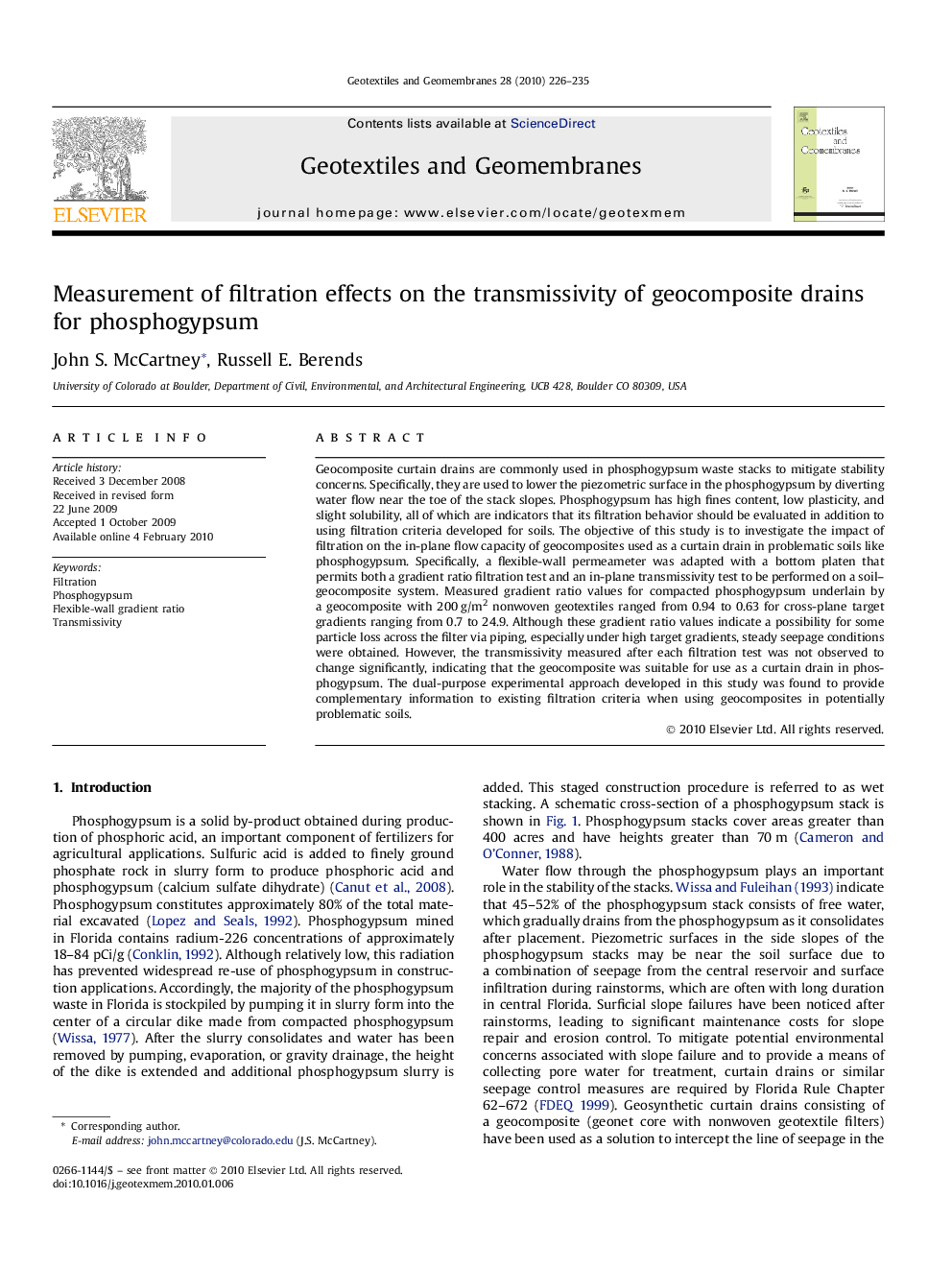| Article ID | Journal | Published Year | Pages | File Type |
|---|---|---|---|---|
| 274468 | Geotextiles and Geomembranes | 2010 | 10 Pages |
Geocomposite curtain drains are commonly used in phosphogypsum waste stacks to mitigate stability concerns. Specifically, they are used to lower the piezometric surface in the phosphogypsum by diverting water flow near the toe of the stack slopes. Phosphogypsum has high fines content, low plasticity, and slight solubility, all of which are indicators that its filtration behavior should be evaluated in addition to using filtration criteria developed for soils. The objective of this study is to investigate the impact of filtration on the in-plane flow capacity of geocomposites used as a curtain drain in problematic soils like phosphogypsum. Specifically, a flexible-wall permeameter was adapted with a bottom platen that permits both a gradient ratio filtration test and an in-plane transmissivity test to be performed on a soil–geocomposite system. Measured gradient ratio values for compacted phosphogypsum underlain by a geocomposite with 200 g/m2 nonwoven geotextiles ranged from 0.94 to 0.63 for cross-plane target gradients ranging from 0.7 to 24.9. Although these gradient ratio values indicate a possibility for some particle loss across the filter via piping, especially under high target gradients, steady seepage conditions were obtained. However, the transmissivity measured after each filtration test was not observed to change significantly, indicating that the geocomposite was suitable for use as a curtain drain in phosphogypsum. The dual-purpose experimental approach developed in this study was found to provide complementary information to existing filtration criteria when using geocomposites in potentially problematic soils.
